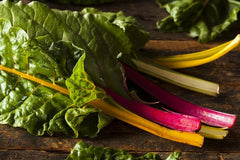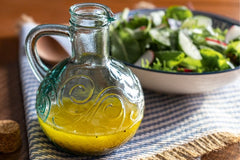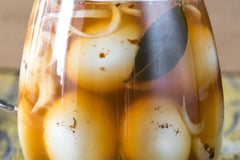How To Maximize Probiotics In Your Ferment

Are you curious about fermentation? You’ve heard about the health benefits of fermented foods. But all fermented foods are not the same. One type of fermentation produces healthy probiotics, another produces alcohol and yet another similar process that has no living probiotics uses vinegar and heat. If you want to make fermentation that will be rich in probiotics, then you want to learn about how to make a probiotic-rich fermentation. It’s really easy to do this kind of fermentation at home if you have the right tools and follow a recipe. But first….
How does fermentation produce probiotics?
Actually, the probiotics already exist before fermentation begins. The process of fermentation allows them to multiply. Probiotics are found on the skins of fruits and vegetables and in dairy because probiotics love milk. In a natural setting these bacteria would be helping to break down unwanted produce that may be left in the field, but before you assume that that rotten apple smashed on the road is probiotic-rich, you should know a little more about fermentation.
As you know, probiotics are a living good bacteria. These bacteria have been shown to provide so many health benefits throughout our body primarily by improving our digestion. When our digestion is improved, we can absorb nutrients more readily with benefits you can feel everywhere, among them, improvements in skin tone, heart and bone health, mood and energy. Just like these good bacteria help you break down foods on the inside, they also help break down foods on the outside and in the process, they preserve it.
Developing a probiotic rich food
In nature, there are many kinds of bacteria. Some we call “good” like probiotics and some can make us sick. When food is fermented for probiotics, the first thing to do is to make sure that the “bad” bacteria are very few, so that the probiotics can thrive and multiply. The more they multiply, the more healthy probiotics that you will have to consume. You do this, by creating the right environment for the probiotics to reproduce.
The right environment for probiotics
Probiotics, like all living things, have certain needs. When you meet these needs, the probiotics will happily reproduce and ferment your food for you. Let’s look at what probiotics need.
An acidic environment
Probiotics can work best when the food that they are breaking down is in an acid. This may sound very scary, because when we think of acid, we usually think of battery acid and gastric acid and things like this. But many foods have various levels of acid. The one that we use for fermentation is salt. When we cover a food to be fermented in salt water, it keeps the environment acidic, just like the probiotics like it, but more than that, the other kinds of bacteria don't like acid, keeping them far away.
No Oxygen
It is hard for us to imagine a living thing that actually doesn’t like oxygen, but because probiotics don’t like it, they can thrive in places that other bacteria can't, like our gut. Most bacteria and mold and yeast need oxygen. So keeping air out serves two purposes: 1) giving the probiotics the right type of environment and 2) keeping other things from growing. To keep the oxygen out, you will want to use a special lid that pulls the air out of the jar and keeps it out, but also releases the carbon dioxide that the fermentation process creates so your jar does not explode. That would be messy and you would have to start over.
Keeping it cool, but not too cool
In order for your fermented foods, to produce ample probiotics, the batch should be stored in a cool place at approximately 70 degrees F (21 C). If the temperature is too hot, the batch will spoil. If it is too cold, then the fermentation process will be prolonged. It is important to evaluate the temperature at different times of the day. Is it warmer or colder than it should be when the sun is hitting an outside wall or the oven next to cabinet is turned on?
Find optimal health through probiotics
It’s easy to incorporate more probiotics into your diet by learning to make fermented foods at home. This will help you produce foods that are both rich in probiotics and taste amazing. After you have made a few batches with a recipe, you will want to experiment based upon your tastes, for less salty, more salty, more crispy, degree of sour taste. But it is time to start making probiotic-foods today.









